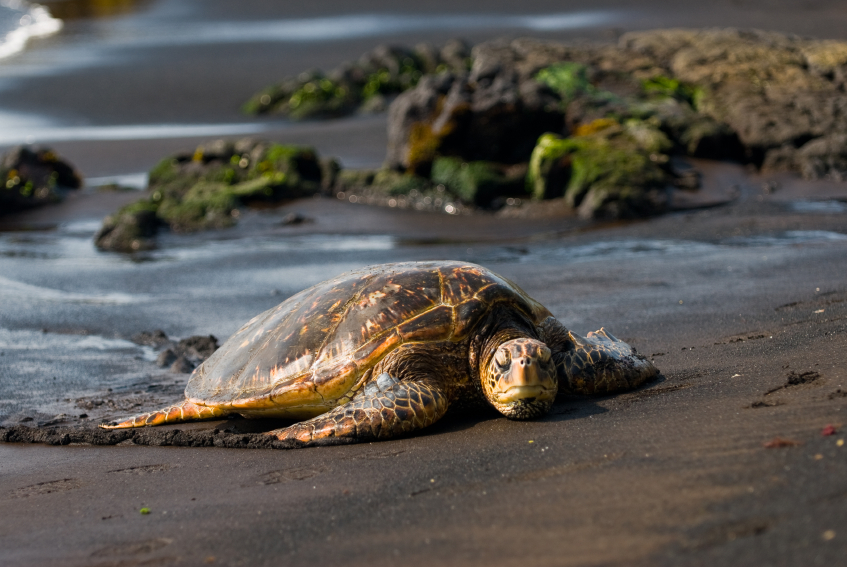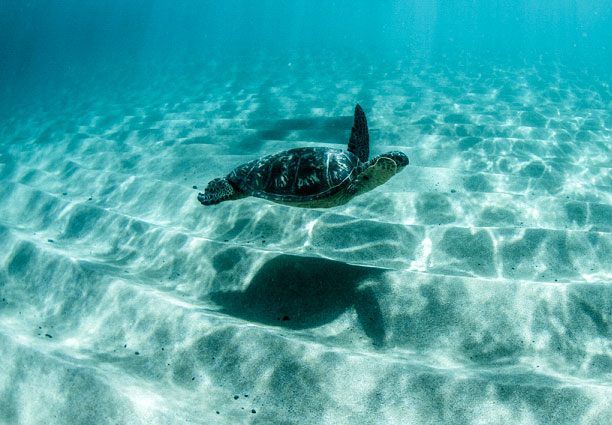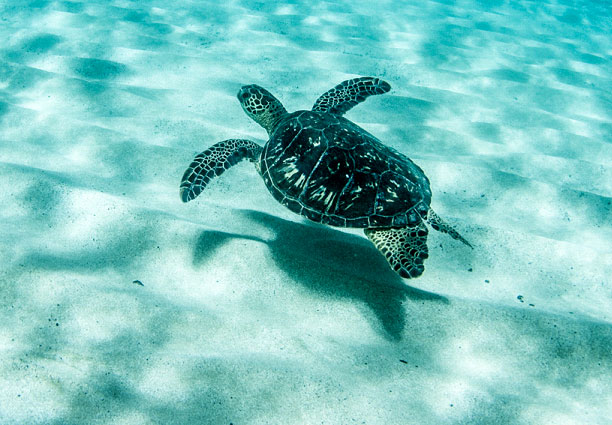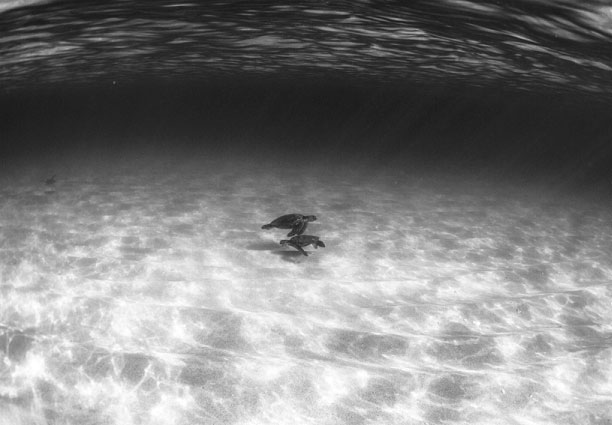A HEART TO HEART ABOUT HAWAII’S HONU

In the honu’s long lifespan it has slowly, but steadily endeared itself into the hearts of Hawaii residents and visitors from around the world. In fact, our flippered friends are one of the most popular critters in Hawaii (short of the state fish, the humuhumunukunukuapuaa, which reaps the benefits of having a name that is so much fun to say).
Currently five species of sea turtles frequent island waters, including olive ridleys, loggerheads and leatherbacks. However, the most frequently sighted species in the islands are the green sea turtle, which are shoreline staples for many of Hawaii’s most popular beaches.
Distinguished from its shelled siblings, the green sea turtle is known for its flat body, teardrop-shaped shell and large, paddle-like flippers. Unlike other members of its sea turtle family, the green sea turtle is herbivorous and the shores it frequents are known for their abundance of seaweed and grasses.

The History of Honu
Some Hawaiian legends say that it was sea turtles which first guided Polynesians to the Hawaiian Islands. Whether that is true or not, the sea turtle has long been considered an amakua or guardian spirit, as well as a good luck charm for those who call Hawaii home. As the only remaining indigenous reptile in the Hawaiian Islands today, the honu is revered as a sacred symbol of longevity and endurance (in other words, the fable of the tortoise and the hare knew what it was talking about).

Helping Our Honu
The green sea turtle is a threatened species and protected under federal and state laws. While the population has shown positive increases in recent years, their situation remains precarious, due to pollution (as juveniles, young honu tend to linger around the coastal waters of Hawai‘i’s island chain where they easily fall prey to pollution, fishing nets and ocean debris) and the disfiguring papilloma virus.

Honu in Hawaii
For those hoping to get up close and personal with a honu, keep in mind that laws require individuals to keep a minimum distance of 20 feet from the animals. While keeping these regulations in mind, there are still several beaches where green sea turtles are frequent visitors such as a number of beaches on Hawaii Island, north Kihei on Maui and on the north shore of Oahu.

Some tips for ensuring that you hone in on a honu sighting on your next island visit include:
- Go where there’s protected reef. Green sea turtles are known to take shelter and hide out in reefs where they can safely feed and play with protection from predators – including humans.
- Stir crazy for seaweed. Honu tend to frequent areas where they can feed on seaweed such as rocky areas and near shores where the clumps of green goo and plentiful.
- Take a turtle tour. There are some tour companies that will transport you to turtle feeding areas, like the Turtle Safari Twogood Kayaks Hawaii.
- Look out at Laniakea. On the island of Oahu, Laniakea beach is a honu hotspot, with at least three to five turtles taking turns feeding, basking in the sun and getting their close up from visitors across the world.
